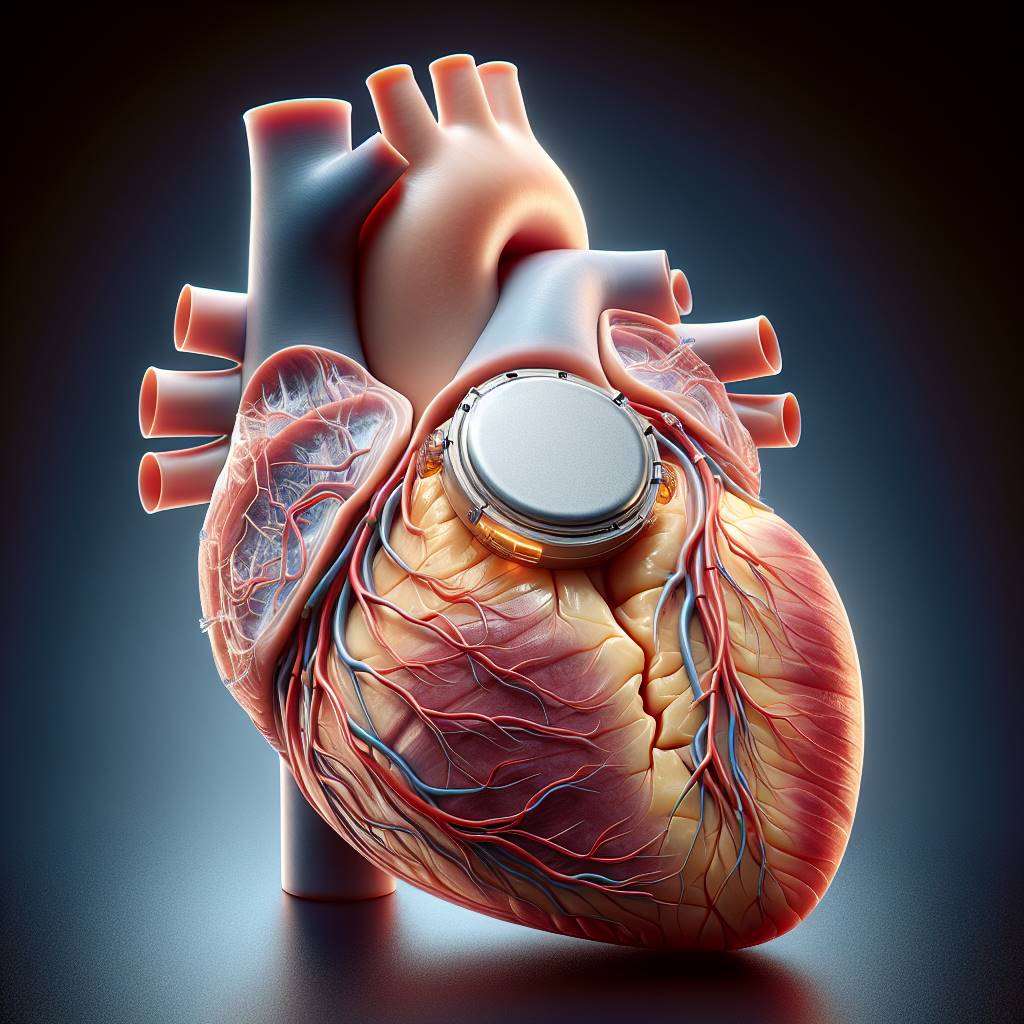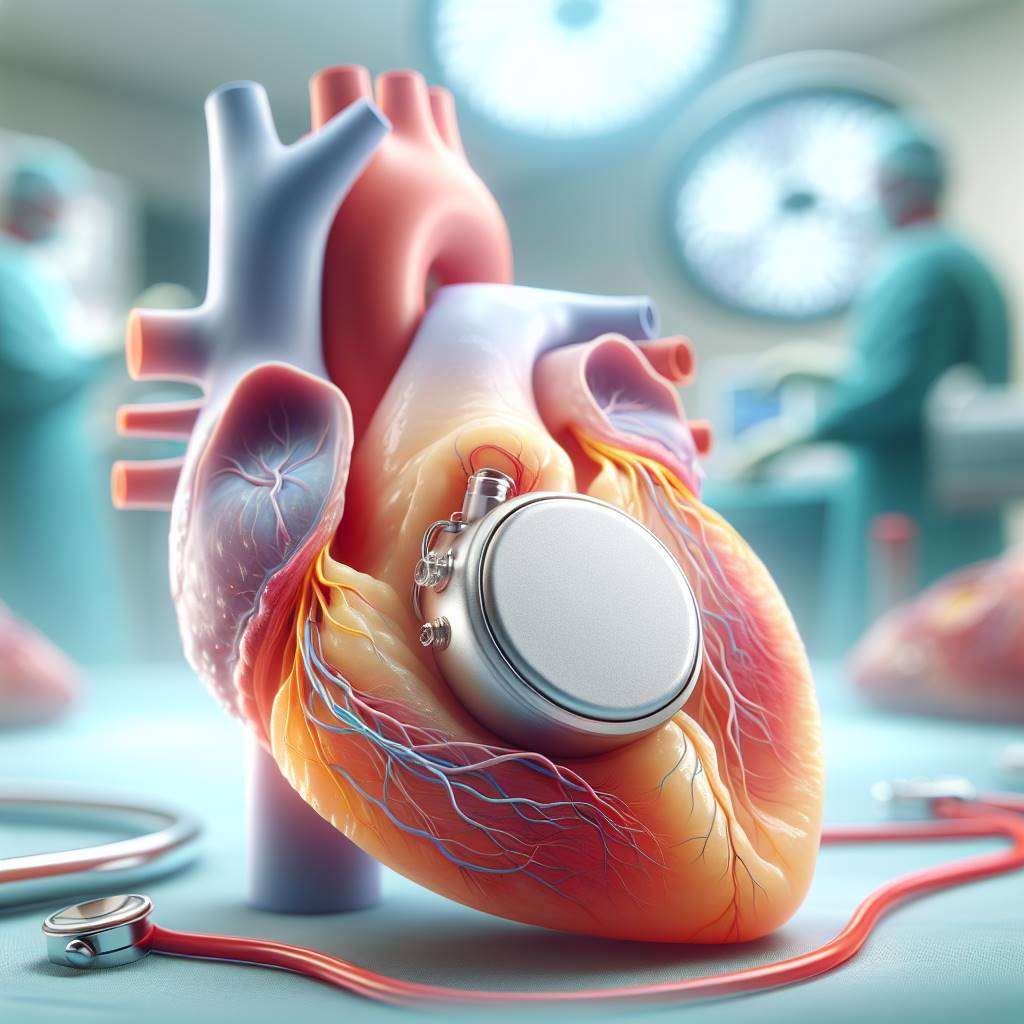Leadless pacemakers represent a groundbreaking advancement in cardiac care, offering a minimally invasive solution for patients with heart rhythm disorders. Unlike traditional pacemakers, these devices are self-contained and do not require leads, reducing the risk of complications. This innovation is particularly beneficial for individuals who cannot tolerate conventional pacemaker systems.
With their compact size and advanced technology, leadless pacemakers are transforming the way we manage conditions like bradycardia. They provide reliable pacing while minimizing surgical risks and improving patient comfort. As awareness grows, more patients and healthcare providers are considering this option for long-term heart health.
What Are Leadless Pacemakers and How Do They Work?
A leadless pacemaker is a small, self-contained device implanted directly into the heart to regulate its rhythm. Unlike traditional pacemakers, it does not require leads or wires to connect the device to the heart. This eliminates the risk of lead-related complications, such as infections or lead fractures.
These devices are typically implanted via a minimally invasive procedure through a catheter inserted into a vein in the groin. Once positioned in the heart, the pacemaker delivers electrical impulses to maintain a steady heartbeat. The compact size and advanced technology make leadless pacemakers a revolutionary option for patients with bradycardia or other heart rhythm disorders.

Benefits of Leadless Pacemakers Over Traditional Devices
Leadless pacemakers offer several advantages over traditional pacemakers, making them an attractive option for many patients. One of the primary benefits is the elimination of leads, which reduces the risk of complications such as infections, lead dislodgement, or fractures. This makes the device more reliable and safer for long-term use.
Additionally, the minimally invasive implantation procedure results in a shorter recovery time and less scarring compared to traditional surgeries. Patients also experience improved comfort since there is no visible device or surgical pocket under the skin. These features make leadless pacemakers a preferred choice for individuals seeking a modern solution to their heart rhythm disorders.
Who Can Benefit from a Leadless Pacemaker Implant?
Not all patients are candidates for a leadless pacemaker, but it is particularly beneficial for those with specific medical needs. Patients with bradycardia, a condition characterized by a slow heart rate, often benefit from this device. It is also ideal for individuals who have had complications with traditional pacemakers, such as infections or lead-related issues.
Additionally, patients who require single-chamber pacing in the right ventricle are excellent candidates for this technology. However, it may not be suitable for individuals who need dual-chamber pacing or have certain anatomical challenges. Consulting a cardiologist is essential to determine if a leadless pacemaker is the right choice for your condition.
Leadless Pacemaker Implantation: Procedure and Recovery Explained
The implantation of a leadless pacemaker is a minimally invasive procedure performed in a catheterization lab. A small incision is made in the groin, and a catheter is used to guide the pacemaker into the heart. Once positioned, the device is securely attached to the heart wall, and the catheter is removed.
Recovery is typically quick, with most patients resuming normal activities within a few days. Post-procedure care includes monitoring for complications such as bleeding or infection at the incision site. Regular follow-ups with a cardiologist ensure the device is functioning correctly and maintaining the desired heart rhythm.
- Minimally invasive procedure
- Shorter recovery time
- Reduced risk of complications
Are Leadless Pacemakers Safe? Risks and Complications
While leadless pacemakers are generally safe, like any medical procedure, they carry some risks. Potential complications include bleeding, infection, or damage to the heart during implantation. However, these risks are significantly lower compared to traditional pacemakers due to the absence of leads and surgical pockets.
Long-term safety data is promising, with studies showing high success rates and minimal complications. Patients should discuss their medical history and potential risks with their cardiologist to make an informed decision. Regular follow-ups are crucial to monitor the device's performance and ensure optimal cardiac health.
Cost of Leadless Pacemakers in India: What to Expect
The cost of a leadless pacemaker in India can vary depending on several factors, including the hospital, the brand of the device, and the expertise of the surgeon. On average, the cost ranges between INR 5,00,000 and INR 10,00,000. While this may seem high, it is important to note that leadless pacemakers offer significant advantages over traditional pacemakers, such as reduced risk of infection and no visible scars.
Many hospitals in India provide financing options or accept health insurance to make this advanced treatment more accessible. Patients are encouraged to consult with their cardiologist to understand the total cost, including pre-surgery tests, the procedure itself, and post-operative care.

Comparing Leadless Pacemakers to Conventional Pacemakers
When comparing leadless pacemakers to conventional pacemakers, the differences are significant. Leadless pacemakers are smaller, wireless devices implanted directly into the heart, eliminating the need for leads or wires. This reduces the risk of complications such as lead displacement or infection.
Conventional pacemakers, on the other hand, require a surgical pocket under the skin to house the device and leads that connect to the heart. While effective, these devices are more prone to complications and require regular maintenance.
| Feature |
Leadless Pacemaker |
Conventional Pacemaker |
| Size |
Very small |
Larger |
| Leads |
No leads |
Requires leads |
| Risk of Infection |
Lower |
Higher |
How Leadless Pacemakers Are Revolutionizing Cardiac Care
Leadless pacemakers are transforming the field of cardiac care by offering a minimally invasive solution for patients with heart rhythm disorders. Unlike traditional pacemakers, these devices are implanted directly into the heart through a catheter, avoiding the need for surgical incisions and reducing recovery time.
Patients with conditions like bradycardia (slow heart rate) can benefit greatly from this technology. The compact size and lack of leads make the device more durable and less prone to complications. Additionally, the implantation procedure is quicker, allowing patients to return to their daily activities sooner.
This innovation represents a significant step forward in improving the quality of life for cardiac patients, particularly those who are at higher risk of surgical complications.
Top Hospitals in India Offering Leadless Pacemaker Surgery
India is home to some of the best hospitals offering leadless pacemaker implantation. These facilities are equipped with state-of-the-art technology and experienced cardiologists who specialize in advanced cardiac care. Some of the top hospitals include:
- Apollo Hospitals, Chennai
- Fortis Escorts Heart Institute, New Delhi
- Narayana Health, Bengaluru
- Max Super Speciality Hospital, Mumbai
- AIIMS, New Delhi
These hospitals provide comprehensive care, including pre-surgery evaluations, the implantation procedure, and post-operative follow-ups. Patients are advised to consult with their healthcare provider to choose the best facility based on their medical needs and budget.
Signs You May Need a Leadless Pacemaker Implant
Recognizing the signs of a heart rhythm disorder is crucial for timely intervention. You may need a leadless pacemaker if you experience symptoms such as:
- Persistent fatigue or weakness
- Dizziness or fainting spells
- Shortness of breath during routine activities
- Chest pain or discomfort
- Irregular or slow heartbeats (bradycardia)
If you notice any of these symptoms, consult a cardiologist immediately. Early diagnosis and treatment can prevent complications and improve your quality of life. A thorough evaluation, including an ECG and other tests, will help determine if a leadless pacemaker is the right option for you.
Latest Innovations in Leadless Pacemaker Technology
Leadless pacemakers represent a groundbreaking advancement in cardiac care. Unlike traditional pacemakers, these devices are small, self-contained, and implanted directly into the heart without the need for leads or wires. This eliminates many complications associated with conventional pacemakers, such as lead dislodgement or infection.
Recent innovations have improved the battery life and functionality of leadless pacemakers, making them suitable for a broader range of heart rhythm disorders. These devices are particularly beneficial for patients who are at higher risk of infections or those with limited venous access.
As technology evolves, leadless pacemakers are becoming more accessible, offering a safer and more efficient option for patients needing cardiac rhythm management.

FAQs About Leadless Pacemakers: Answers You Need
Patients often have questions about leadless pacemakers. Here are some common queries:
- What is a leadless pacemaker? It is a small, wireless device implanted directly into the heart to regulate its rhythm.
- Who is eligible? Patients with specific arrhythmias, such as bradycardia, may benefit from this device.
- How is it implanted? The device is inserted via a minimally invasive procedure through a vein in the groin.
- Are there risks? While generally safe, potential risks include bleeding, infection, or device dislodgement.
Consult your cardiologist to determine if a leadless pacemaker is the right choice for your heart health.
Recovery Tips After Leadless Pacemaker Implantation
Recovering from a leadless pacemaker implantation is typically quicker compared to traditional pacemaker procedures. However, following specific guidelines can ensure a smooth recovery.
Patients are advised to avoid strenuous activities for at least a week post-procedure. Keeping the insertion site clean and dry is crucial to prevent infections. Regular follow-ups with your cardiologist are essential to monitor the device's performance and your overall heart health.
Notify your doctor immediately if you experience symptoms like chest pain, dizziness, or swelling at the insertion site. Adhering to these tips can help you return to your daily routine safely and effectively.
Success Rates of Leadless Pacemakers: What Studies Show
Clinical studies have demonstrated the high success rates of leadless pacemakers in managing heart rhythm disorders. These devices have shown a success rate of over 95% in appropriate candidates, with fewer complications compared to traditional pacemakers.
A key advantage is the reduced risk of lead-related issues, such as fractures or infections. Additionally, patients report improved quality of life due to the minimally invasive nature of the procedure and the absence of visible scars or bulky devices.
As research continues, the long-term benefits of leadless pacemakers are becoming increasingly evident, solidifying their role in modern cardiac care.
Future of Cardiac Care: The Role of Leadless Pacemakers
The advent of leadless pacemakers marks a significant milestone in the evolution of cardiac care. These devices are paving the way for more patient-friendly and efficient treatments for heart rhythm disorders.
Future advancements may include enhanced battery life, expanded indications for use, and integration with other cardiac monitoring technologies. Researchers are also exploring ways to make these devices more affordable and accessible to patients worldwide.
As technology progresses, leadless pacemakers are expected to play a pivotal role in reducing the global burden of cardiovascular diseases, offering hope to millions of patients.
Best Pacemaker Surgery Doctors in India
Dr. Balbir Singh, Chairman of Cardiology at Medanta - The Medicity, Gurugram, is a renowned expert in electrophysiology with over 30 years of experience. Another leading specialist is Dr. Nityanand Tripathi, Senior Consultant Cardiologist at Fortis Escorts Heart Institute, Delhi, with a DM in Cardiology and extensive international exposure. Both are recognized for their expertise in advanced cardiac device implantation.
Learn more on best pacemaker implantation surgery doctors in india
Best Pacemaker Surgery Hospitals in India
Fortis Escorts Heart Institute, Delhi, and Apollo Hospitals, Chennai, are among India’s top hospitals for leadless pacemaker implantation. Both are NABH and JCI accredited, offering cutting-edge facilities like 3D mapping systems and multidisciplinary cardiac care. These hospitals are known for their high success rates, international patient services, and adherence to global standards.
Find more best pacemaker implantation surgery hospitals in india
Pacemaker Surgery Cost in India
The cost of a leadless pacemaker in India typically ranges from INR 5,00,000 to INR 8,00,000 (approximately USD 6,000 to USD 10,000). Factors like the hospital’s reputation, doctor’s expertise, and device type influence the cost. Patients usually require a 1-2 day hospital stay. India offers a significant cost advantage compared to Western countries, with options for insurance coverage or financing plans.
Learn pacemaker implantation surgery cost in india
Pacemaker Surgery Treatment in India
The leadless pacemaker procedure in India involves inserting the device through a catheter into the heart via the femoral vein. Advanced technologies like fluoroscopy and 3D imaging ensure precision. Recovery is typically quick, with most patients resuming normal activities within a week. Top hospitals in India adopt global medical protocols and innovations, ensuring safe and effective outcomes.
Learn on Pacemaker Surgery Treatment in India
FAQs
What is a leadless pacemaker?
A leadless pacemaker is a small, self-contained cardiac device implanted directly into the heart to regulate abnormal heart rhythms. Unlike traditional pacemakers, it does not require leads or a surgical pocket.
Who is eligible for a leadless pacemaker?
Patients with certain types of bradycardia or slow heart rhythms, and those who cannot tolerate traditional pacemakers due to complications like infections, are ideal candidates for a leadless pacemaker.
How long does the leadless pacemaker procedure take?
The procedure typically takes about 30-60 minutes. It is minimally invasive and performed under local anesthesia or mild sedation.
What are the advantages of a leadless pacemaker?
Key benefits include a lower risk of infection, no visible scars, no leads-related complications, and a quicker recovery time compared to traditional pacemakers.
Are there any risks associated with leadless pacemakers?
While rare, potential risks include vascular complications, device dislodgement, or cardiac perforation. However, these risks are minimized with experienced specialists and advanced techniques.
How long does a leadless pacemaker last?
A leadless pacemaker typically lasts for 10-15 years, depending on the patient’s heart condition and device usage.
Can a leadless pacemaker be replaced?
Yes, once the battery is depleted, a new device can be implanted. The old device is usually left in place unless removal is necessary.
Is the leadless pacemaker procedure painful?
The procedure is minimally invasive and performed under anesthesia, so patients usually experience little to no pain during the process.
What is the recovery time after the procedure?
Most patients recover within 1-2 days and can resume normal activities within a week, depending on their overall health.
Is the leadless pacemaker MRI-compatible?
Yes, most modern leadless pacemakers are MRI-compatible, allowing patients to undergo MRI scans if needed.
Understanding Life with a Pacemaker: Activities and Options
Living with a pacemaker can significantly enhance your quality of life, but it also comes with certain considerations regarding daily activities. It's essential to know what you can and can't do to maintain your health and well-being. For a comprehensive guide on this topic, check out our blog on Living With a Pacemaker: Activities You Can and Can't Do.
When considering a pacemaker, understanding the differences between the types available is crucial. Single-chamber and dual-chamber pacemakers serve different purposes and can affect your lifestyle in various ways. To learn more about these options, visit our informative post on Single-Chamber vs. Dual-Chamber Pacemakers: What's the Difference?.
By educating yourself about the lifestyle adjustments and the types of pacemakers, you can make informed decisions that align with your health needs and personal preferences.